What is a Limerick?
A limerick is a type of humorous and light-hearted poem. It consists of five lines and follows a specific rhyming pattern and rhythm. Limericks are often whimsical and have a sing-song quality to them.
Structure of a Limerick:
1. The first, second, and fifth lines have the same rhythm and rhyme with each other. They are typically longer and follow an "AABBA" rhyme scheme.
2. The third and fourth lines also have the same rhythm and rhyme with each other, but are shorter and follow an "AABBA" rhyme scheme.
Example of a Limerick:
There once was a man from Kent (A)
Whose nose was exceedingly bent (A)
He walked into a door (B)
And fell on the floor (B)
And all his money was spent (A)
Study Guide for Limericks:
1. Rhyme Scheme:
Identify and understand the "AABBA" rhyme scheme of a limerick. Discuss how the rhyme scheme contributes to the humor and light-heartedness of the poem.
2. Rhythm and Meter:
Explore the rhythm and meter of a limerick. Discuss the sing-song quality and how it adds to the playful nature of the poem.
3. Humor and Whimsy:
Discuss the humorous and whimsical nature of limericks. Analyze the use of wordplay, puns, and unexpected endings to create amusement.
4. Writing Limericks:
Encourage students to write their own limericks. Provide examples and prompts to inspire creativity and help them practice the structure and style of limerick writing.
[Limerick] Related Worksheets and Study Guides:
.◂English Language Arts Worksheets and Study Guides Second Grade. Rhyming Words
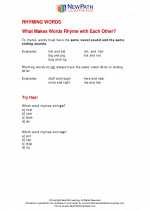
 Activity Lesson
Activity Lesson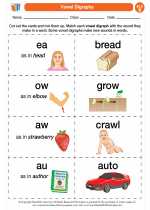
 Activity Lesson
Activity Lesson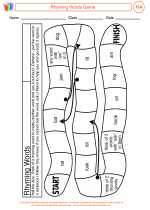
 Worksheet/Answer key
Worksheet/Answer key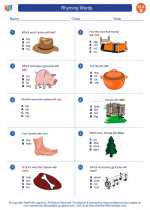
 Worksheet/Answer key
Worksheet/Answer key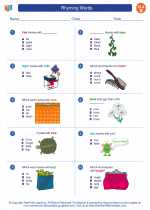
 Worksheet/Answer key
Worksheet/Answer key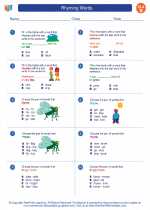
 Worksheet/Answer key
Worksheet/Answer key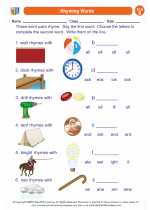
 Worksheet/Answer key
Worksheet/Answer key
